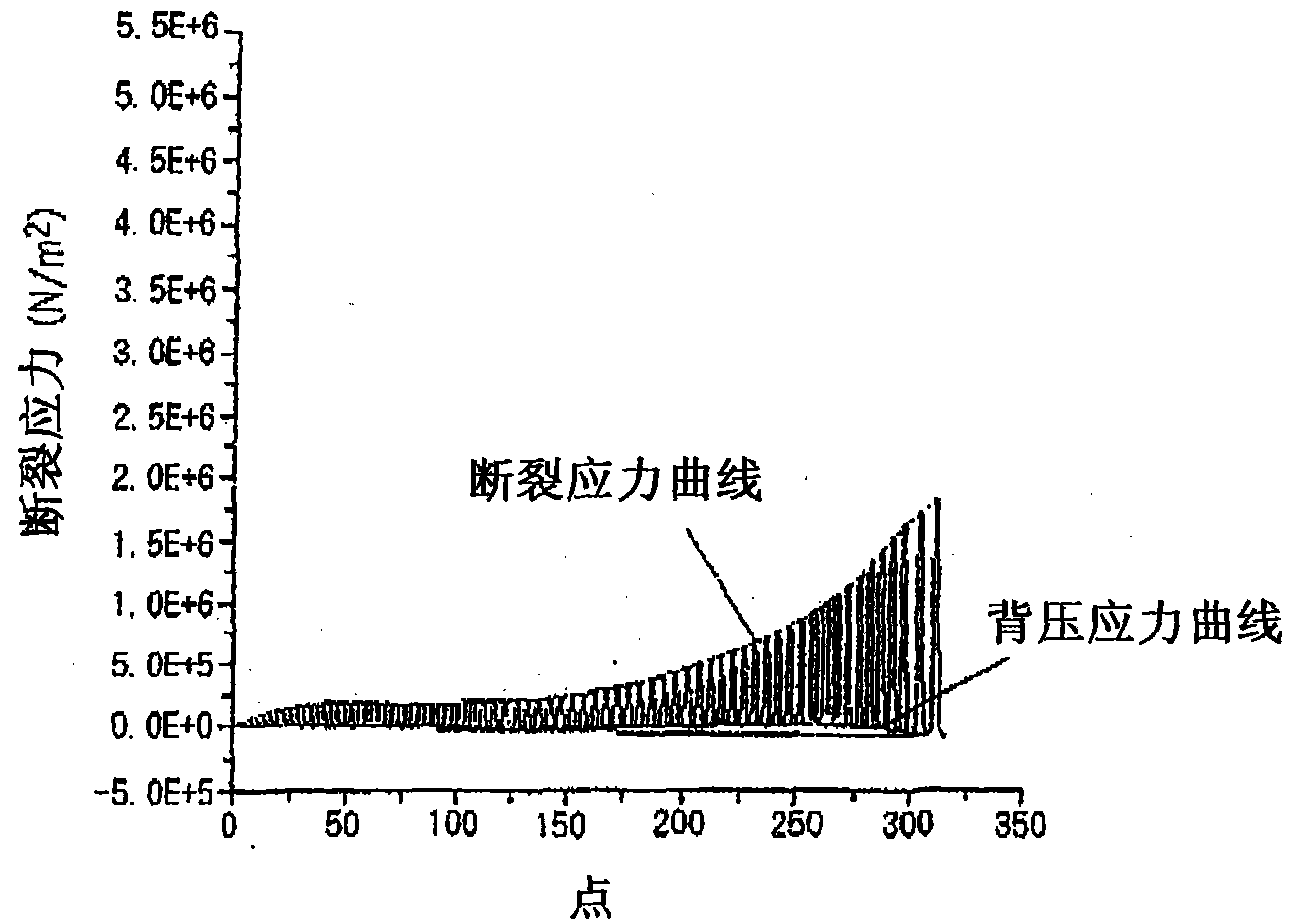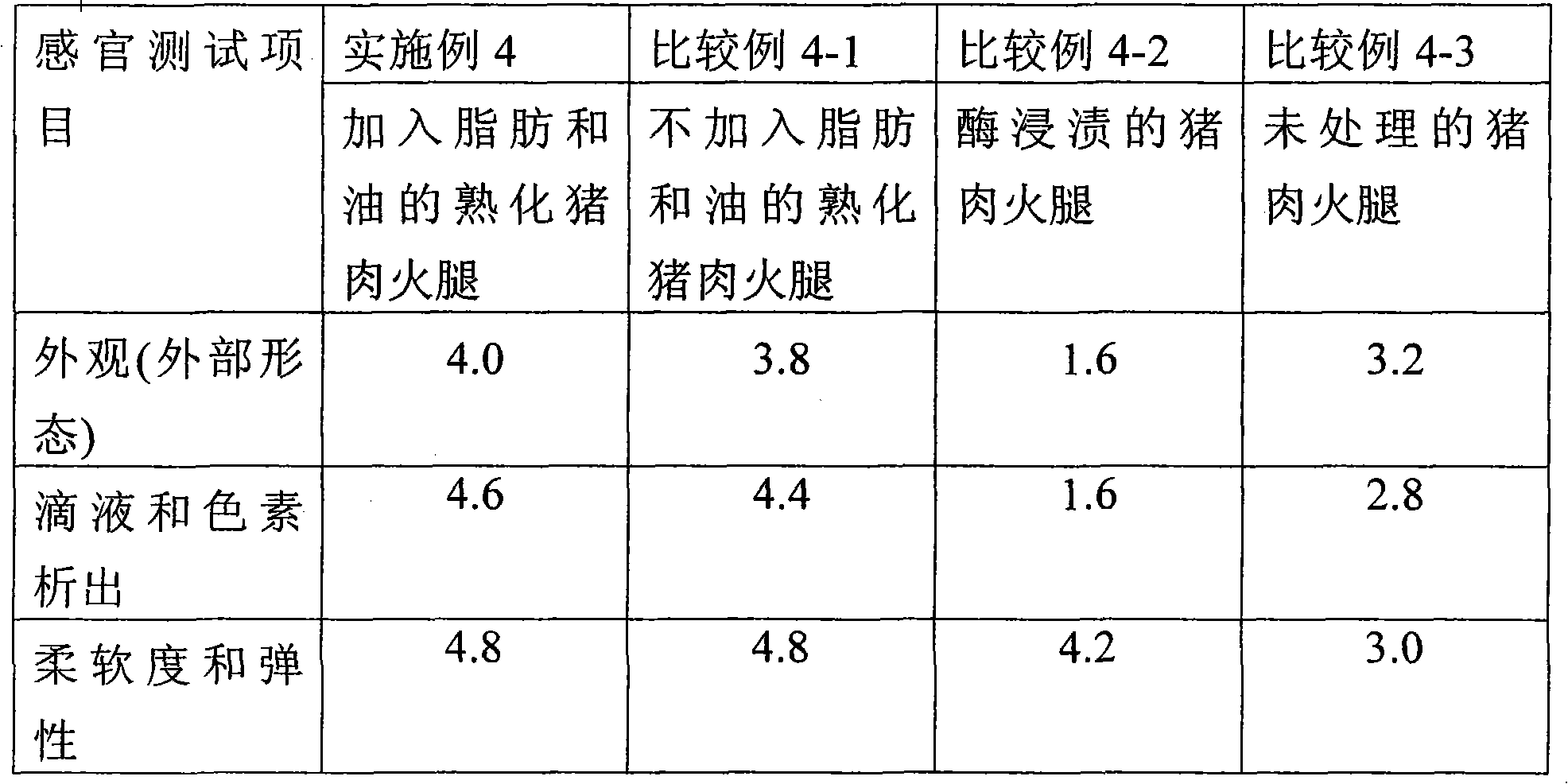Method of producing matured food
A technology for cooked food and food, which is applied to the cooked food with improved texture and flavor, and the taste of the obtained cooked food, can solve the problems of difficult immersion of animal food materials, change of bitter substances, and precipitation of enzyme solution pigments, etc. The effect of increasing visual palatability, increasing satisfaction, and increasing tenderness
- Summary
- Abstract
- Description
- Claims
- Application Information
AI Technical Summary
Problems solved by technology
Method used
Image
Examples
Embodiment 1
[0060] Chunks of beef rump from Australia were frozen at -30°C in the freezer. Completely frozen meat was partially thawed using a microwave (National NE-SV30HA) and cut perpendicular to the long axis of its muscle fibers. Beef rump steaks with a maximum longitudinal width of 10 cm, a maximum transverse width of 7 cm and a thickness of 1.5 cm were prepared at a cutting interval of 1.5 cm. Prepared steaks are thawed completely in the refrigerator. The thawed beef round was soaked in an enzyme solution having protease activity (Protease N "Amano" G, manufactured by Amano Enzyme, Inc.) adjusted to 0.5% by mass using a phosphate buffer solution (pH 5.8) After 1 minute, take it out and wrap it in a wrapping container. The container was placed under a reduced pressure condition of 0.01 MPa, and the food material was kept in an expanded state for 1 minute. Thereafter, the reduced pressure condition was released, and the degree of vacuum was increased again to reach a pressure of 0...
Embodiment 2
[0067] Chicken breast fillets were frozen at -30°C in the refrigerator. Fully frozen chicken breast strips were partially thawed in a freezer and cut perpendicular to the long axis of their muscle fibers. Chicken breast fillets with a maximum longitudinal length of 5 cm, a maximum transverse length of 1.5 cm and a thickness of 1.0 cm were prepared with a cut interval of 1.0 cm. Prepared chicken breast strips are thawed completely in the freezer. Thawed chicken breast slices were soaked in an enzyme solution with protease activity (Bromelain F, manufactured by Amano Enzyme, Inc.) adjusted to 0.5% by mass using a phosphate buffered saline solution (pH 5.8) for 5 After a few minutes, take it out and wrap it in a packing container. The container was placed under a reduced pressure condition of 0.01 MPa, and the food material was kept in an expanded state for 5 minutes. Thereafter, the reduced pressure condition was released, and the degree of vacuum was increased again to reach...
Embodiment 3
[0074] Calamari (Japanese flying squid) was frozen at -30°C in a refrigerator. Completely frozen squid was partially thawed using a microwave (National NE-SV30HA) and cut longitudinally perpendicular to the long axis of its muscle fibers. Squid slices with a maximum longitudinal length of 10 cm, a maximum transverse length of 0.5 cm and a thickness of 0.5 cm were prepared at a cutting interval of 0.5 cm. Prepared squid fillets are completely thawed in the freezer. Thawed squid slices were soaked for 1 minute in an enzyme solution having protease activity (papain W-40, manufactured by AmanoEnzyme, Inc.) adjusted to 0.5% by mass using a phosphate buffer solution (pH 5.8) , take it out and wrap it in a packing container. The container was placed under a reduced pressure condition of 0.01 MPa, and the food material was kept in an expanded state for 1 minute. Thereafter, the reduced pressure condition was released, and the degree of vacuum was increased again to reach a pressure...
PUM
 Login to View More
Login to View More Abstract
Description
Claims
Application Information
 Login to View More
Login to View More - R&D
- Intellectual Property
- Life Sciences
- Materials
- Tech Scout
- Unparalleled Data Quality
- Higher Quality Content
- 60% Fewer Hallucinations
Browse by: Latest US Patents, China's latest patents, Technical Efficacy Thesaurus, Application Domain, Technology Topic, Popular Technical Reports.
© 2025 PatSnap. All rights reserved.Legal|Privacy policy|Modern Slavery Act Transparency Statement|Sitemap|About US| Contact US: help@patsnap.com



